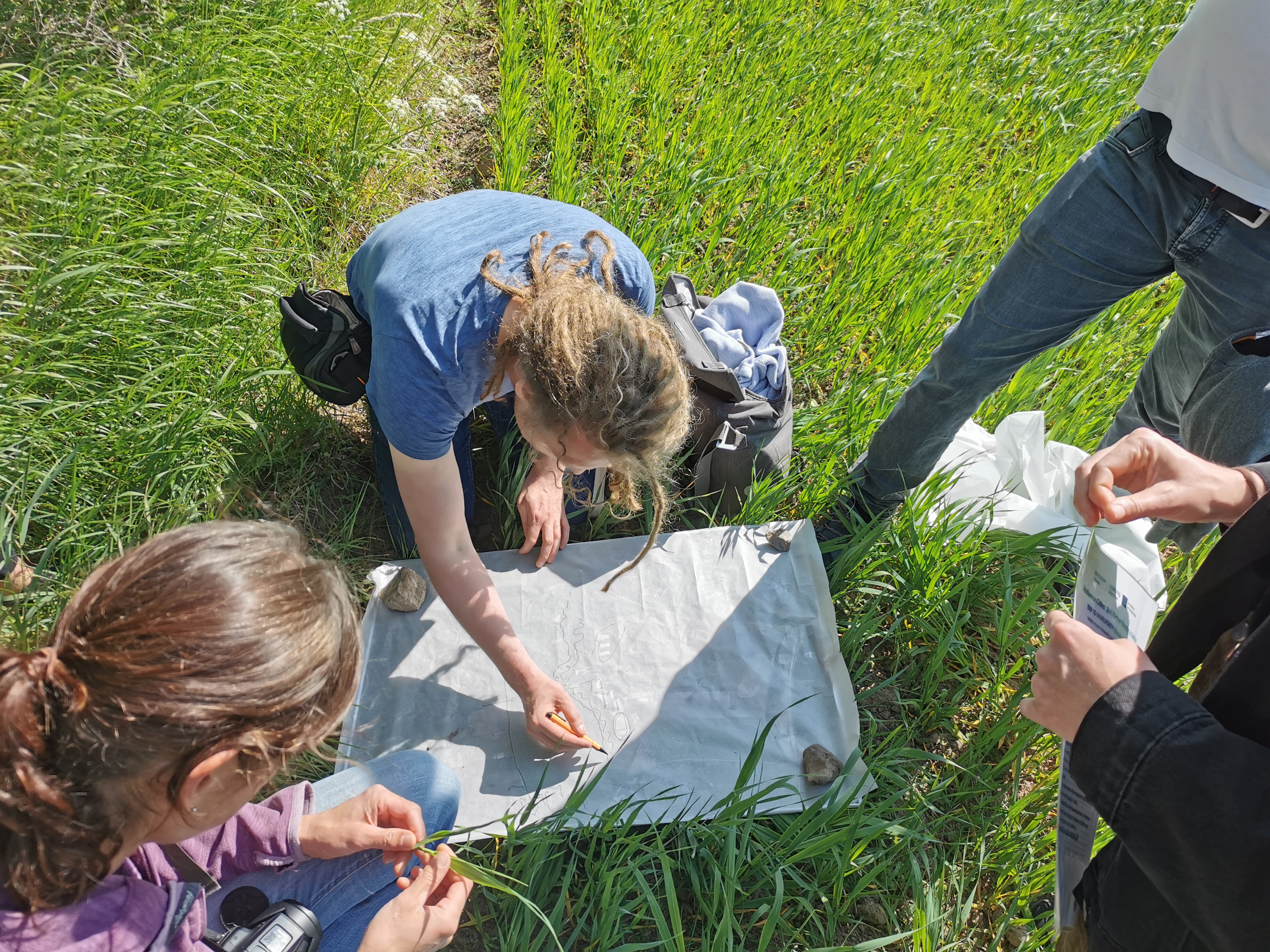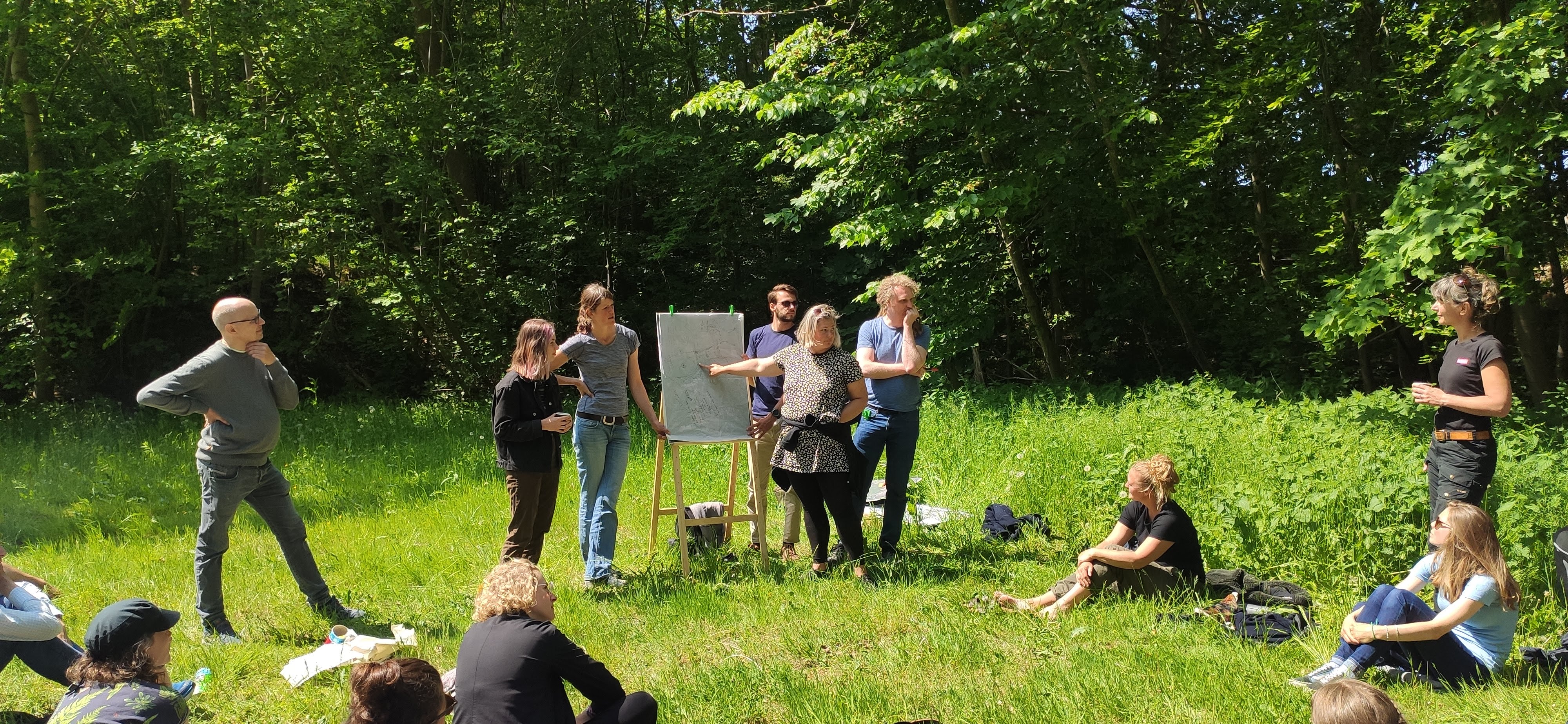How will Aarhus’s Vilhelmsborg look in three years? Will there be trees, a stream, a bird-watching tower and some frogs leaping around?
Authors: Lars Eg Hoppe, Caitlin Ball, Sofia Aivalioti
Reimagining cities
A remarkable transition is sweeping across the North Sea region as cities rally behind nature-based solutions (NbS) to forge a path towards greener, more biodiverse, and resilient urban landscapes. Spearheading this groundbreaking movement is Biodiverse Cities, an Interreg North Sea project committed to accelerating biodiversity action. Through the implementation of urban investment programs enriched with innovative NbS, our partnership aims to put the brakes on biodiversity loss, bolster essential ecosystem services, and harmonise the co-existence of people and nature, ultimately fostering nature-inclusive societies.
As the Biodiverse Cities partnership gains momentum, it is in the process of planning and designing the pilot activities that aim to bring nature to cities and people to nature. Recently, the city of Aarhus took centre stage as the host of the project's second partner meeting held from May 31st to June 1st. This gathering provided an invaluable opportunity for partners to explore Aarhus' pilot areas, delving into the city's ambitious initiatives, aspirations, and strategies surrounding renaturalisation processes, biodiversity conservation, and citizen engagement. During the meeting, all partners actively engaged in the design of the city pilot areas, and more specifically, with the design of the Green Ring South of Aarhus (Vilhelmsborg area).
A spotlight on Vilhelmsborg
The Green Ring South of Aarhus, is roughly about 350 ha and consists of 5 separate areas of farmland owned by Aarhus Municipality. The plan is to convert these areas from farmland into natural spaces, forming a green circular corridor that connects two Natura 2000 spots with other forests and nature areas, all while making new or better recreational paths for the public to use.
Beyond providing better recreational access to new areas, these measures will also protect drinking water resources, increase biodiversity, and store carbon dioxide to achieve efforts in Aarhus Municipality Climate Plan 2021-2024.
The farmland has been cultivated for many years and therefore holds very few species in natural habitats. The potential for nature restoration is quite high as the existing nearby nature areas provide sources of plant and animal species colonisation. Furthermore, establishing novel habitats can be sped up by aided dispersal of plant seeds as well as restoration of small lakes, wetlands, and streams.

Partners working together in small teams for the design of the Vilhelmsborg area
Co-creation in Aarhus
The planning process has already hit the ground running, with Aarhus engaging representatives from the three closest local communities. In 2023, their team is looking into a period of communication and NBS co-creation with local residents and stakeholders.
During the recent partner meeting, all partners helped the city of Aarhus team co-create all five different farmland areas with new ideas for restoration and design. Many interesting elements were suggested by the expert team, such as ideas on how and where to restore groundwater streams, recreate small lakes, enrich biodiversity, highlight the natural and cultural history of the area, and create zones for mental health, play, exercise, and community activities. Another inspiring idea that came up was to connect the nearby horse riders with citizen science projects to create more engagement and support environmental education for the area.

Presentation of all new ideas on how renaturalise the Vilhelmsborg area
The city of Aarhus is already planning to have a new forest of about 100 ha (planted and established by natural re-growth) while the remaining land is converted from farmland to nature by natural succession or aided dispersal of plant seeds. Interesting local populations that will be supported include the treefrog (Hyla arborea) and the crested newt (Triturus cristatus). The goal of The Green Ring South of Aarhus is to shape the area as a predominantly open landscape, with a mixture of wetlands, extensive dry and wet grasslands, as well as forest and meadows. In this way, we maintain and develop valuable habitats for animal and plant life and offer a diversity of nature experiences for citizens who want to use the landscape with respect for the area's natural and cultural values.
Aside from the Green Ring, Aarhus is also working to transform the Hede Enge area. Hede Enge is located east of Egå Engsø near the city. There the team aims to create 180 ha of new nature area by converting farmland into diverse habitats such as wetlands, dry heathland, and meadows. The expansion will double the size of Egå Engsø, a popular natural attraction known for its scenic landscape, hiking trails, and abundant birdlife. The project intends to restore natural processes, protect biodiversity, enhance recreational opportunities, and support climate adaptation. By involving private landowners and utilising monitoring data, the project seeks to establish a robust ecosystem with high structural diversity, promoting species interactions and connectivity, particularly for large herbivores, pollinators, and birds.
Biodiverse Cities on the move
With a steadfast commitment to biodiversity, Biodiverse Cities is spearheading a movement that heralds a new era of urban resilience and coexistence with the natural world.
Next stop - Bremen! In November the Biodiverse Cities team will meet to support the host partners (SKUMS and BUB) with their biodiversity challenges.
